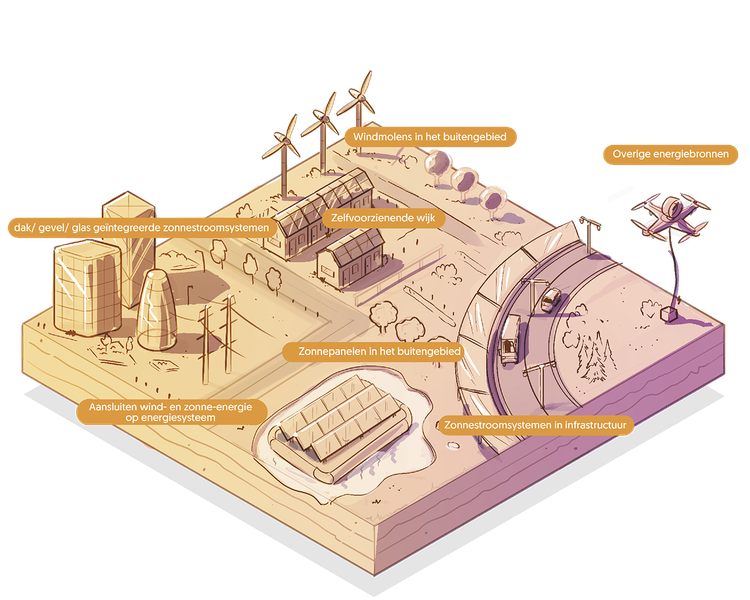This transition needs to be accelerated and scaled up, especially to meet the increased demand for renewable electricity resulting from electrification in the mobility, agriculture, built environment, and industrial sectors.
Two Meerjarige Missiegedreven Innovatieprogramma’s (MMIP’s) focus on themes related to the sustainability of the electricity system:
- MMIP 1: Hernieuwbare elektriciteit op zee (pdf)
- MMIP 2: Hernieuwbare elektriciteitsopwekking op land en in de gebouwde omgeving (pdf)
Furthermore, developments in other sectors also have an impact on the challenges faced by the electricity system, such as in the built environment, mobility, and the utilization of waste heat from the industry.
Want to know more?
Electricity
-
Electricity plays a central role in the future sustainable energy supply. It is often referred to as the new "primary fuel." One of the objectives of the Climate Agreement is to generate a minimum of 42 TWh from renewable sources on land and in the built environment by 2030 (at least 35 TWh from large-scale systems and at least 7 TWh from small-scale systems in the built environment). This corresponds to 35% of the total current annual consumption and implies an almost quadrupling of electricity generation from wind turbines and solar power installations. A strong further growth is anticipated for the period until 2050 and beyond.
The Netherlands has ample space for wind and solar energy on land and in the built environment. However, the actual realization depends on many innovations, such as:
- Advancements in technologies for the production of onshore wind and solar power, further improving costs, yields, and application possibilities.
- Innovations in market and policy to combine low costs with high societal value.
- Functional and aesthetic integration of solar power systems into the built environment.
- Spatial and ecological quality as important prerequisites for the application of solar power systems in rural areas (land, infrastructure, and water).
- Technological and application innovations supporting the expansion of onshore wind while maintaining societal enthusiasm.
- Integration of large amounts of electricity from sustainable sources into the future energy system, with particular attention to the limited capacity of the electricity grid.
- Continuous exploration of new sources for sustainable electricity generation (in addition to solar and wind), on land and in the built environment.
